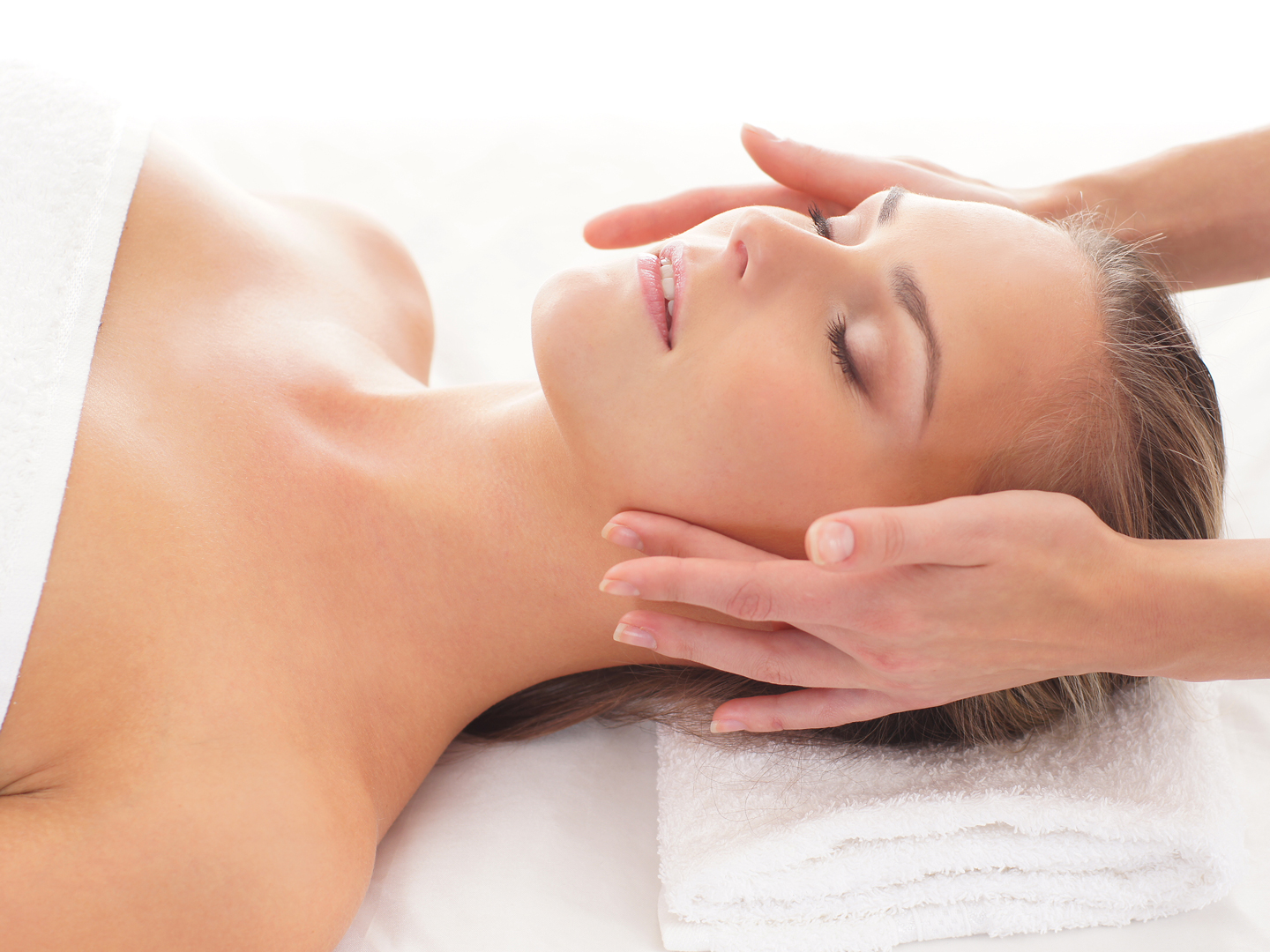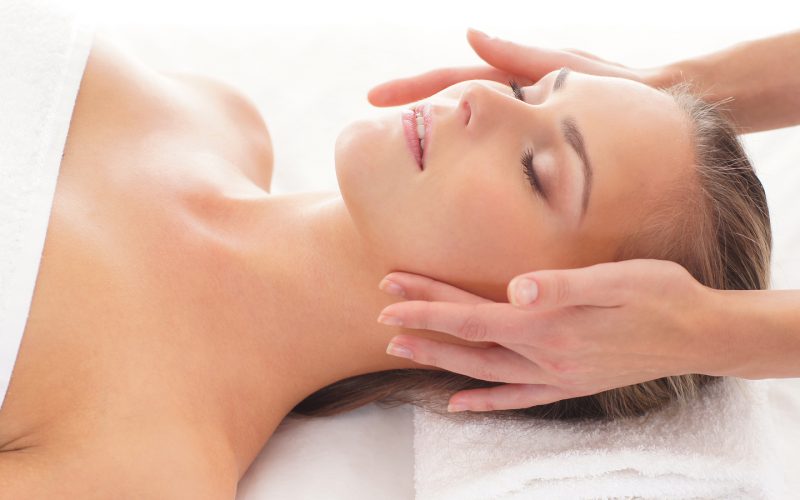Learn how this beauty treatment can help reset your skin and put your skin care woes to rest.
 Whatever your skin type and skin concerns, there’s nothing like a facial to cleanse and nourish your skin, leaving it with a healthy glow. This long-standing skin treatment comes in many varieties and price ranges. But whichever type of facial you opt for, you’re sure to see and feel the benefits.
Whatever your skin type and skin concerns, there’s nothing like a facial to cleanse and nourish your skin, leaving it with a healthy glow. This long-standing skin treatment comes in many varieties and price ranges. But whichever type of facial you opt for, you’re sure to see and feel the benefits.
What’s a facial?
A facial is generally performed by a spa esthetician, although some practicing dermatologists will perform similar procedures such as chemical peels. There are many different types of facials, and each one generally involves several different stages. Once you have consulted with your esthetician about what might suit your specific skin type, he or she will probably perform one or more of the following procedures:
- Cleansing: A cleanser will likely be applied to your skin to remove any makeup, dirt, or oil from its surface.
- Steaming or warm towels: The esthetician may apply gentle heat to your face, either in the form of steam or a warm towel. This will help to open up clogged pores, making it easier to remove oil that has become trapped within them.
- Exfoliation: Facials generally feature some form of exfoliation to help scrub away, or otherwise remove, dead skin cells. This frees up your pores, allowing oil to be drained more effectively. It also preps your pores to receive any other products that the esthetician will apply to your face.
Exfoliation can be performed using a mechanical exfoliator or a chemical exfoliator. Mechanical exfoliators are gritty, abrasive substances that are rubbed gently into the skin to scrub away top layers of dead skin. In contrast, chemical exfoliants use acidic ingredients to remove dead cells and promote cell turnover. Chemical exfoliants can often have longer-lasting results, but they may not be suitable for sensitive skin. Before applying any exfoliant to your skin, your esthetician should consult you about your skin type.
- Facial massage: A gentle, facial massage can help to promote blood circulation and lymphatic drainage, resulting in healthier-looking skin. Massaging the face in certain patterns can help to push excess fluid out of the skin tissue and into the lymph nodes, which process these fluids and remove harmful toxins. These kinds of massages promote overall skin health and reduce puffiness.
- Extractions: If desired, your esthetician may apply pressure to problem areas of your skin to remove blackheads and unclog pores. While this deep-cleaning action can be great for getting rid of stubborn blackheads, it is often painful, and may be bad for your skin in the long run. Make sure to read up on extractions before getting a facial, and to consult your esthetician about what might be right for you.
- Facial masks: Probably the most popular component of a spa facial, the face mask can be made up of many different ingredients, and used to target many skin concerns. Whatever it’s made of, the face mask will usually be applied to the skin, allowed to sink in for several minutes, and then gently removed.
- Serums and sunscreens: At the end of your facial, your esthetician will probably apply one or more serums to your skin in order to continue delivering nutrients throughout the day. Depending on what kinds of procedures have already been performed, he or she may also apply a sunscreen to protect your skin from sun damage.
Do I need a facial?
While facials relax your facial muscles and can leave you with radiant skin, they might not be the right option for every skin type. If you have severe, cystic acne or a skin infection, we recommend seeing a dermatologist straight away. Your skin will probably require a more serious treatment, such as professional cyst drainage or a course of antibiotics. If you suffer from skin conditions such as eczema or psoriasis, you should also consult a dermatologist before visiting an esthetician.
If your skin concerns are more minor, however, a spa facial treatment can be an excellent way to treat them. Regular facials can treat a variety of skin types, from mature skin to blemish-prone skin, and they can often be customized to suit your skin’s specific needs.
 Facial benefits for skin
Facial benefits for skin
Anti-aging facials: Facials can deliver several benefits to mature skin. They can help to support healthy cell turnover and regeneration (which tends to slow down as we age), preventing the formation of fine lines and wrinkles during the aging process. Many facials for mature skin will also feature collagen-boosting ingredients to plump your skin and brighten your complexion, reducing the appearance of existing lines.
Facials for acne: If you have acne-prone or oily skin, the right facial could work wonders to balance out your complexion. These facials often feature fruit acids and enzymes for deep exfoliation, and clearing facial masks with astringent ingredients. Facials that include exfoliation can also help to reduce the appearance of acne scars by promoting healthy cell turnover.
Moisturizing facials: For severely dry or inflamed skin, consider a moisturizing facial. These procedures often feature an exfoliating step to help clear away flaky patches, and include deeply hydrating ingredients to heal and soothe your skin. We recommend a moisturizing facial during the dry, harsh, winter months, when everyone’s skin could use a boost.
Anti-aging, anti-acne, and moisturizing facials are just a few of the different kinds of treatments out there. To get more information, and discover the perfect treatment for you, we recommend checking out the menus of spas in your area.
Facial precautions
While facials can be great for the skin, it’s important to take caution whenever you’re putting your skin into someone else’s hands (literally). If you’re visiting a spa for the first time, make sure to look up its ratings and reviews online, and inquire about their methods and ingredients. It can often be wise to patronize a spa that uses a recognizably safe line of skin care products.
It’s important to consult with your esthetician before the procedure, so that you can inform them about any allergies you may have. If you have sensitive skin or are prone to product-induced breakouts, your esthetician may test a small amount of product before applying it to your entire face.
When it comes to spa-grade exfoliation and extractions, less is generally more. Too much exfoliation can strip your skin of its natural defensive barrier, making it more prone to damage.
Alternatives to facials
There are many alternatives to traditional spa facials, including dermatological procedures like microneedling and dermaplaning, which have become increasingly popular. These kinds of procedures are generally intended to remove dead skin cells, promote collagen production, and brighten the skin’s appearance. We recommend consulting with a professional dermatologist before booking any of these treatments.
DIY facial at home
If a spa facial isn’t right for your schedule or budget, you can also perform a facial treatment at home. All you’ll need is a warm towel, an exfoliant (if desired), a facial mask, and a serum. First, apply the warm towel to your face for 2-3 minutes to open your pores. Next, use your exfoliant according to the product’s instructions. Give yourself a gentle, lymphatic drainage massage to promote healthy skin tissue, and then use your facial mask as directed by the product’s instructions. Finally, follow up with your serum and moisturizer for glowing, healthy skin!
